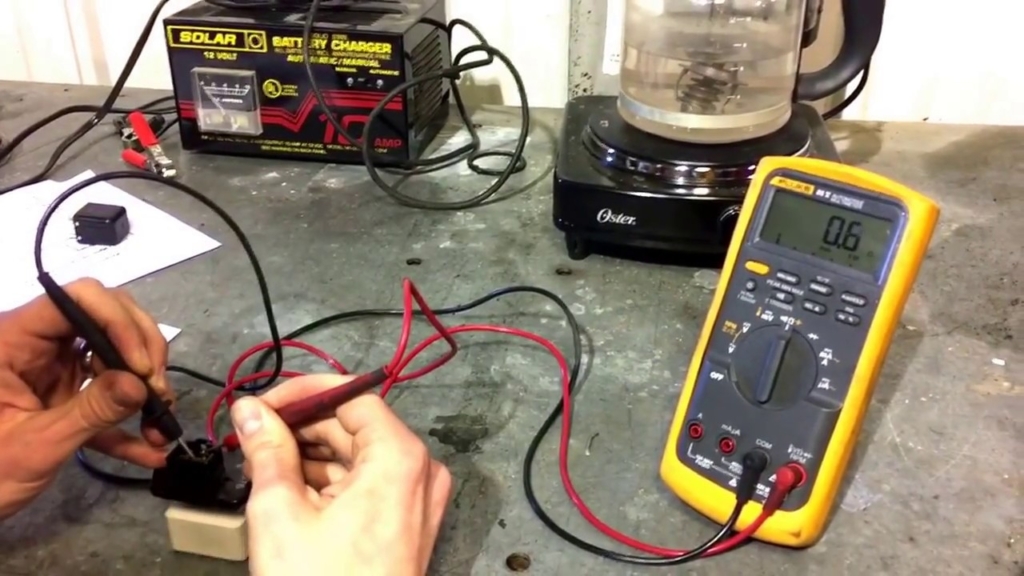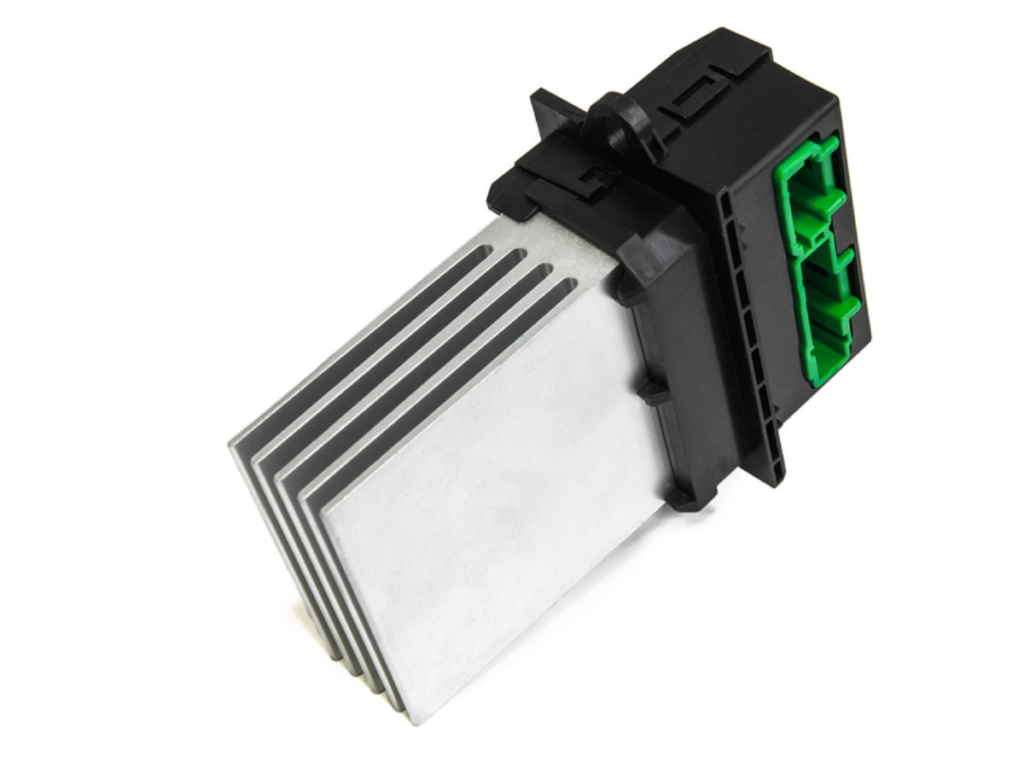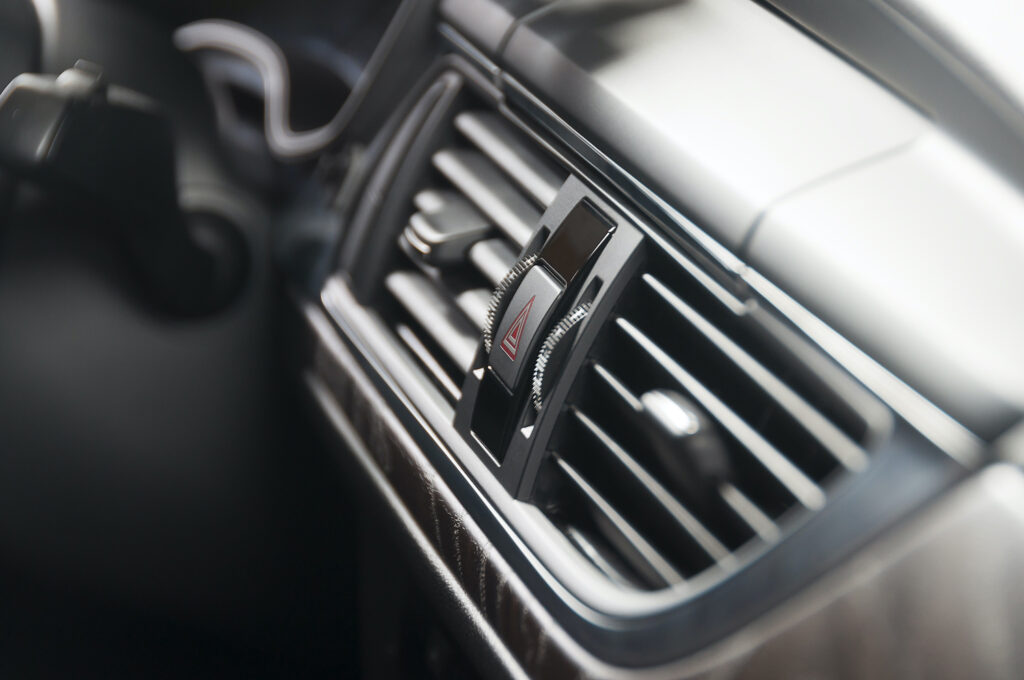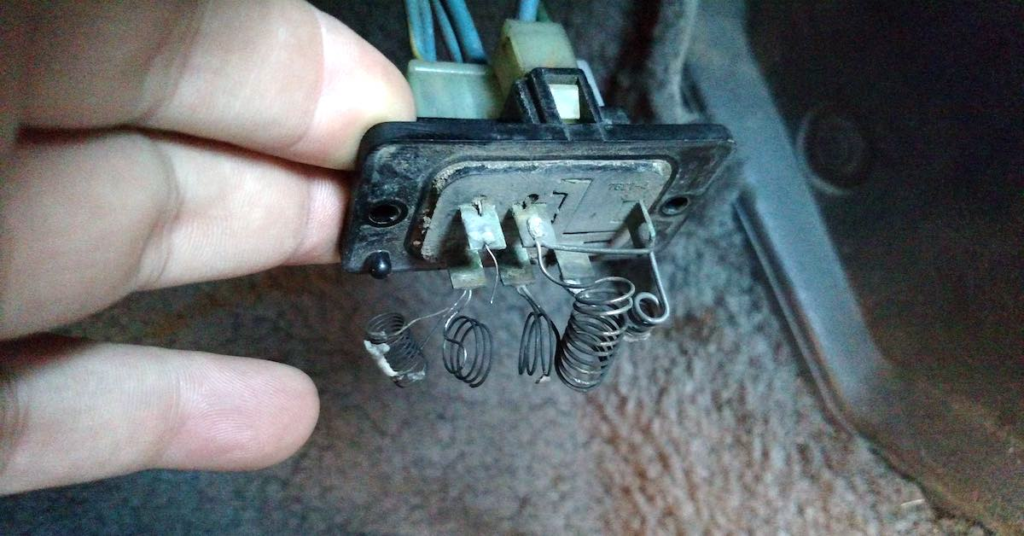If the blower of your car has only 4 or 5 distinct speed settings, it is likely to use a simple electric resistor to control the speed of the fan. The resistor sets the electrical current limits so that the blower can operate at the right speed. If the resistor fails, the blower will only work in the selected speed settings in most cases.
There are also cases in which a blower motor of the car may not work.
Fortunately, you can check the condition of the part by blower motor resistor test. With just a multimeter, you can find out when it’s time to find another replacement.
Blower Motor Resistor Test
If you hear a blower fan running but can’t make it change its speed, you probably have a resistor problem. Here are some tips for testing the blower motor resistor:
- Start by looking at the blower fan resistor. The repair manual can tell you its placement according to the model and design of your car is.
- Check out the resistor visually. Look for obvious signs of rust and burns from overheating.
- Check the electrical resistance of each terminal resistor with a multimeter. Set up an ohms reading device (resistance measure) and connect one of its probes to the resistor’s common output terminal. Use another probe to measure the resistance between the terminal output and each input terminal of the resistor. Measure the resistance between one pair terminals at a time.
- If any of the points indicate constant resistance, the blower motor resistor fails. Endless reading defines an open circuit.

Be careful when handling a blower resistor. As electric currents pass through the resistor for a long time, this device can create high temperatures – enough to heat your fingers or worse.
What is the Blower Motor Resistor?
The blower motor resistor is usually located outside the heat box or HVAC plenum that transmits air into the internal space. It is generally installed in HVAC control cables somewhere between the blower control knob and the blower motor.

The resistor controls the blower motor’s fan speed and changes the air pressure generated by the blower fan movement. It does this by controlling the electric motor that powers the motor.
The function of the Blower Motor Resistor
The resistor restricts current, thus reducing the power output to control the blower motor speed setting.
More Current = More Speed
Less Current = Less Speed
The blower motor ensures that the right amount of power reaches the car, turning the fan at the right speed to blow air from the HVAC system to the chamber.

It is also important to note that most cars have a circuit that exceeds the resistor when the blower motor is at high speed. In this case, the battery power is sent directly to the Blower motor.
Many modern cars have a mini-computer, called a blower motor control module, instead of a traditional resistor.
What Are the Signs of a Bad Blower Motor Resistor?
Every time you play with your car’s air-conditioning system or heating system, you change the current flowing through the blower motor resistor on the way to the blower motor.
A malfunctioning or failing motor resistor interferes with the proper operation of the heating and air system. The most common symptoms include:
- The blower fan stands on a single speed setting.
A resistor can vary between speed settings depending on user preferences. However, resistor failure can cause the speed to stick to a single speed setting.
While the blower motor is still running, you cannot change its speed. It can be unpleasant in situations where you want to adjust your car’s internal temperature to a comfortable level.
A blower confined in a high-speed environment will always blow you up in hot or cold air when you don’t need it, while a one stuck in a low-key environment can be just as frustrating.
- Blower fan cannot access specific speed settings.
In some cases, a failed resistor may set more than a one-speed setting. However, it may lose the ability to reach certain speeds. A blower motor will work well in the available settings, but it won’t work well if you choose a disabled speed setting.

This sign is not limited to a bad blower motor resistor. A broken blower motor switch can also stop the blower from turning to specific speed settings. If your blower motor cannot switch to a certain speed, check both the resistor and your dashboard switch.
- No air from vents
In most cases, due to the presence of the bypass circuit, the blower motor will continue to operate at high speeds with a failed resistor.
However, there are situations where a default resistor will prevent the current from reaching the blower motor ultimately. Without power, the motor will not work. As a result, the blower fan remains quiet and still, and there is no air coming out of the vents.

This symptom may also appear from a failed blower fan or several other issues. If the blower motor resistor test clears the resistor and wiring, the problem may lie in the fan’s motor.
Causes of Bad Blower Motor Resistor
Resistors go through rough situations. They always have electricity flowing between them, and the voltage supply can change dramatically as the car owner adjusts the power of the fan blower.
The most common reasons for the failure of a blower motor resistor can include:
- Rust from prolonged exposure to air and moisture.
- Overheating – if the motor finds it difficult to move due to the bearings’ malfunctioning, it can raise the resistor’s temperature to dangerous levels.
- Normal wear out with time and usage.
What is the cost of replacing a Blower Motor Resistor?

You can still drive your car despite the fault of the blower motor resistor. However, you will probably find it uncomfortable if you are unable to change the blower’s speed.
Depending on the manufacturer and model, the blower motor resistor can go anywhere between $3 and $335 at The Auto Parts Shop. Replacement parts come in individual units, two sets of resistors, or a blower motor resistor kit.

Can someone recommend Suspender Belts and Garters? Cheers xx